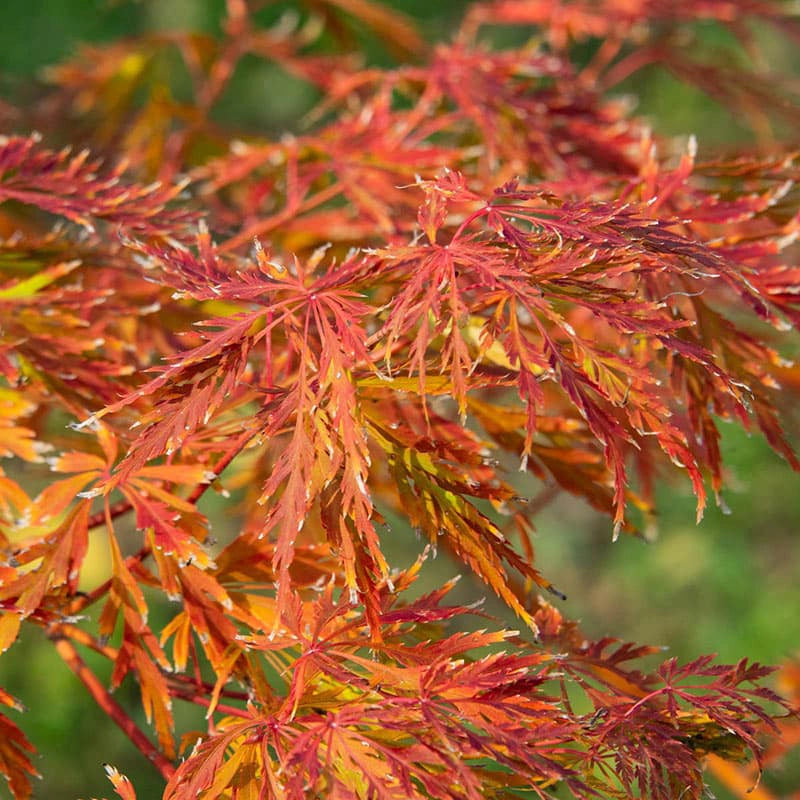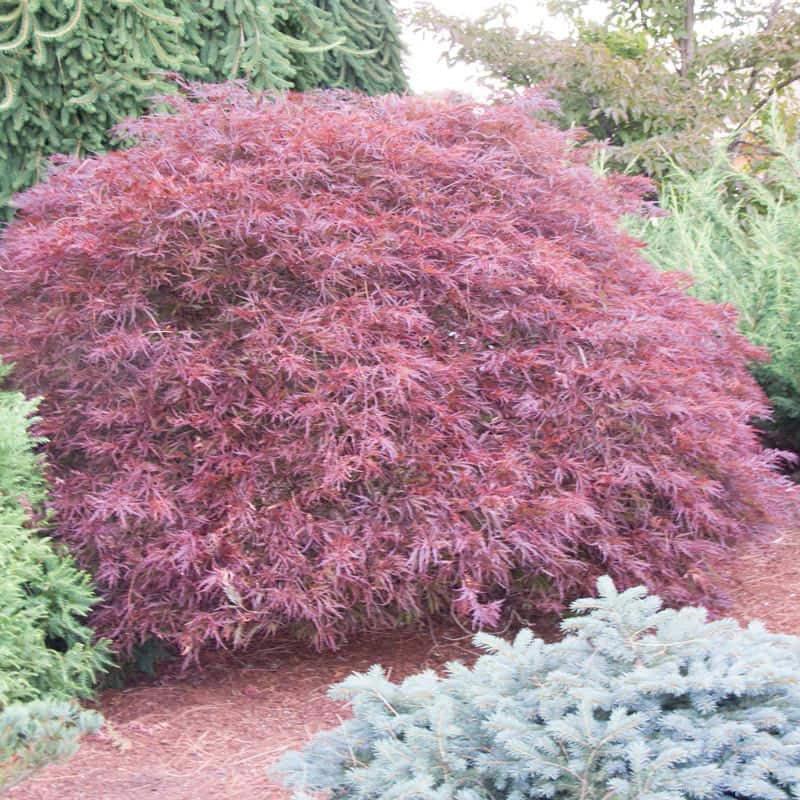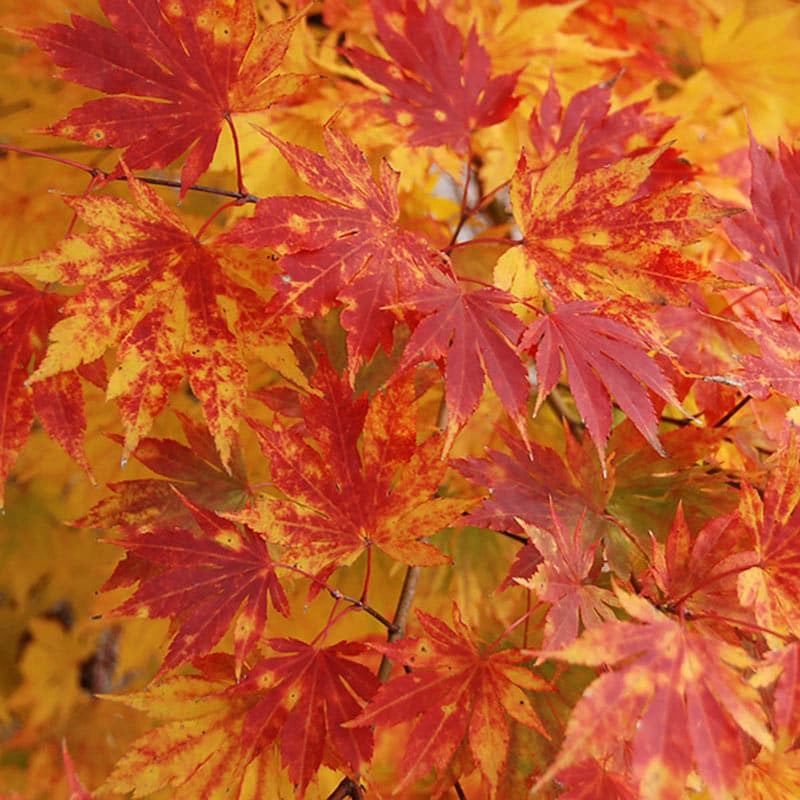9 products
-
Ice Dragon® Japanese Maple Tree
 Ice Dragon® Japanese Maple Tree
Ice Dragon® Japanese Maple Tree- Regular price
-
1 for
$127.49 - Regular price
-
$149.99 - Sale price
-
1 for
$127.49
-
Red Dragon Weeping Japanese Maple
 Red Dragon Weeping Japanese Maple
Red Dragon Weeping Japanese Maple- Regular price
-
1 for
$127.49 - Regular price
-
$149.99 - Sale price
-
1 for
$127.49
-
North Wind® Japanese Maple Tree
 North Wind® Japanese Maple Tree
North Wind® Japanese Maple Tree- Regular price
-
1 for
$99.99 - Regular price
-
- Sale price
-
1 for
$99.99
-
Coral Bark Japanese Maple
 Coral Bark Japanese Maple
Coral Bark Japanese Maple- Regular price
-
1 for
$127.49 - Regular price
-
$149.99 - Sale price
-
1 for
$127.49
-
Orangeola Japanese Maple

 Orangeola Japanese Maple
Orangeola Japanese Maple- Regular price
-
1 for
$127.49 - Regular price
-
$149.99 - Sale price
-
1 for
$127.49
-
Lileeannes's Jewel Japanese Maple

 Lileeannes's Jewel Japanese Maple
Lileeannes's Jewel Japanese Maple- Regular price
-
1 for
$149.99 - Regular price
-
- Sale price
-
1 for
$149.99
-
Ryusen Japanese Maple

 Ryusen Japanese Maple
Ryusen Japanese Maple- Regular price
-
1 for
$127.49 - Regular price
-
$149.99 - Sale price
-
1 for
$127.49
-
Viridis Laceleaf Maple Japanese

 Viridis Laceleaf Maple Japanese
Viridis Laceleaf Maple Japanese- Regular price
-
1 for
$149.99 - Regular price
-
- Sale price
-
1 for
$149.99
-
Purple Ghost Japanese Maple
 Purple Ghost Japanese Maple
Purple Ghost Japanese Maple- Regular price
-
1 for
$127.49 - Regular price
-
$149.99 - Sale price
-
1 for
$127.49
Red leaves from our Japanese ornamental trees create a beautiful summer to fall accent. Try dwarf Japanese maple trees to accent property lines, or plant these colorful ornamentals front and center for dramatic focal points. These beautiful trees are a fantastic way to jazz up your shade garden this season.
Where should you plant a Japanese maple tree?
Although they are native to Asia, Japanese maples thrive in the middle zones of the United States, especially Zones 5, 6, and 7. However many Japanese maples perform well outside of these zones, into the warmer Zones 8 and even 9. Some Japanese maples may suffer from leaf scorch in hotter areas, so be sure to check the hardiness zones of your variety when choosing what maple to buy and where to plant.
Japanese maple trees are ideal for growing in partial shade, making them great for planting near other trees or in the shade of a structure. Their tender leaves can be sensitive to both sun and wind, so choose a location that provides shelter from the elements. Japanese maples perform best when planted in well-drained, acidic soil with plenty of compost or organic matter. Smaller varieties look beautiful in zen gardens or as accent pieces, while larger Japanese maples work wonders as anchors to the landscape.
Do Japanese maple trees need sun or shade?
Sun needs vary by variety, but Japanese maples usually perform best in partial shade. Dappled light, or morning light, allows these trees to get the sunshine they need without scorching. If you must plant in full sun, choose a darker-leaved variety, such as a purple Japanese maple, and keep the ground consistently moist with frequent waterings.
Are Japanese maple trees fast-growing?
Japanese maples are relatively slow growers, especially in American gardens. Their slow growth is part of what makes these specimen trees so special. To keep your tree growing as quickly as possible, make sure to keep the roots moist with consistent watering, and choose a site with rich, loamy soil. Fertilizer and annual dressings of compost can help enrich the soil for these tender, nutrient-loving trees.
How far do Japanese maple roots spread?
Contrary to popular belief, Japanese maples' roots are not a mirror reflection of their canopies. Japanese maple roots can spread well past the reach of their branches, and most full-sized Japanese maples have roots spreading radially, 12 to 20 feet out from the tree. Smaller varieties, like Moonrise, have smaller root systems.
Which Japanese maple tree is the hardiest?
Japanese maple trees tend to perform best in the parts of the US that mirror their temperate native lands, including Zones 5, 6, and 7. However, members of our Jack Frost® series, including Ice Dragon and North Wind, are hardy as far as Zone 4.
Can Japanese maple trees survive the Winter?
Japanese maple trees can survive the winter in much of the Midwest, South, and the United States' temperate climates. Many Japanese maples are winter-hardy to Zone 5 or 6, but some are winter hardy all the way to Zone 4. If your area experiences cold winters, look for varieties marked for your zone. And, try mulching around your maple trees to protect the roots from harsh weather.










